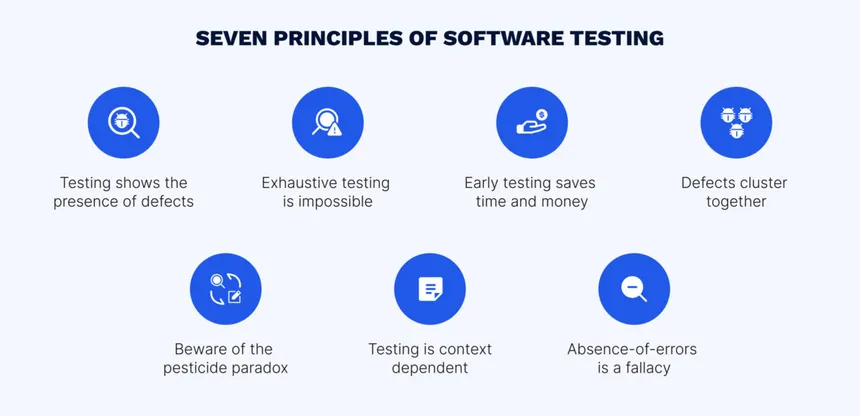 CASE STUDY
CASE STUDY Seven Principle of testing

The Seven Principles of Software Testing are foundational guidelines defined by ISTQB (International Software Testing Qualifications Board). These principles help ensure efficient, effective, and structured testing.
✅ 1. Testing Shows Presence of Defects
Testing can show that defects are present, but it cannot prove that there are no defects. Even if no bugs are found, it doesn't mean the software is bug-free.
✅ 2. Exhaustive Testing is Impossible
Testing everything (all combinations of inputs and paths) is not feasible except for very trivial systems. Instead, risk-based and prioritized testing should be used.
✅ 3. Early Testing
Testing should start as early as possible in the software development life cycle to detect defects early, when they are cheaper to fix.
✅ 4. Defect Clustering
A small number of modules often contain most of the defects (Pareto Principle: 80% of problems come from 20% of the modules). Focused testing in these areas can be more efficient.
✅ 5. Pesticide Paradox
Repeating the same tests will eventually stop finding new bugs. To uncover more defects, test cases need to be regularly reviewed and updated.
